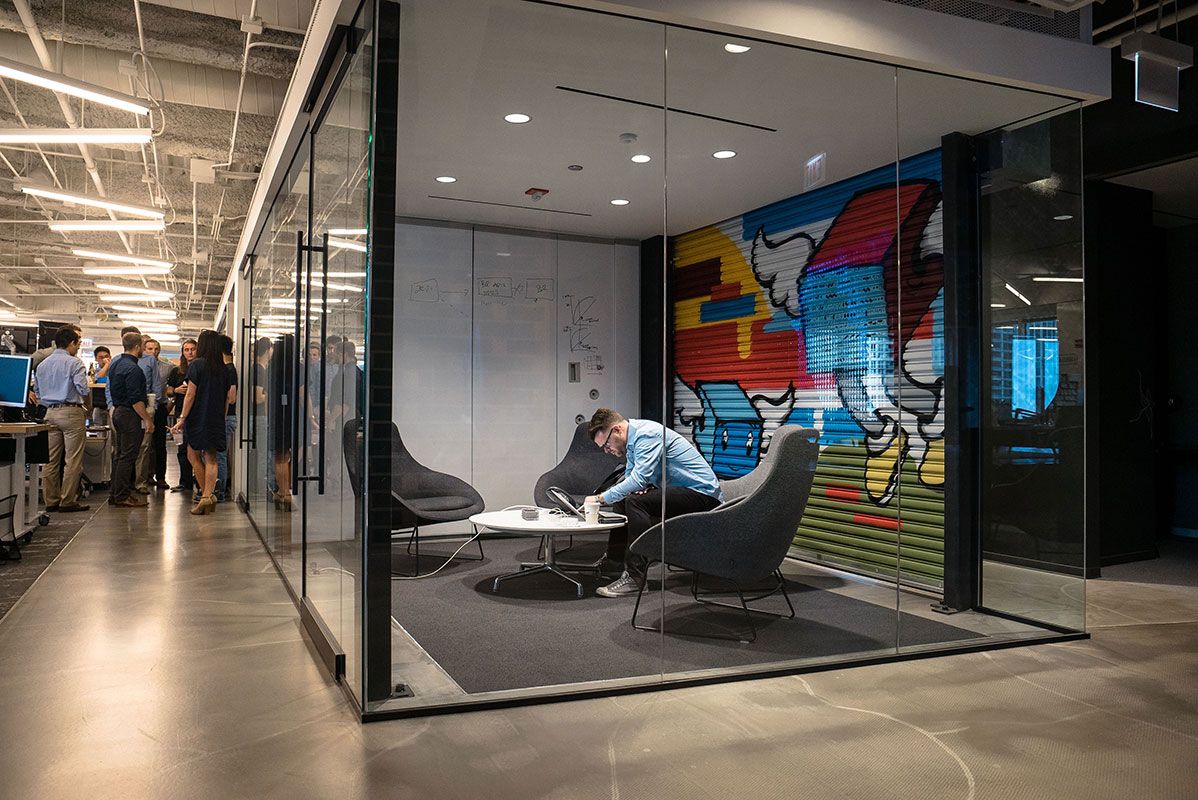Over the last couple of years, our society made some pretty big steps in the sustainable direction. So, it was really a matter of time before the business world quickly picked up on these cues and started implementing sustainability.
Fortunately, as soon as this ball started rolling it became evident that the effects of these strategies are not strictly related to altruistic goals but provide real, tangible benefits to the companies that engage in the process.
Because of that, sustainability quickly turned from novelty to a new industry requirement setting clear standards for all companies that want to remain competitive in the present-day business landscape. Let us take a look then at how you can introduce these changes in your office or c-working space as well.
Take care of the lighting
Changing the way your offices are litten is one of the most common and still the most effective ways to combine sustainability and wellness features and create a work environment that will create considerable savings and have a positive effect on your workers’ mental wellbeing.
o, for a start, try to expand the window space and introduce more natural light in the workspace. When you are done, try to replace the traditional lighting fixtures with the more contemporary and energy-efficient CFL and LED alternatives.

Image by rawpixel.com
Opt for lively organic materials
This is yet another way to make your workspace more beautiful and inspiring but more sustainable at the same time. The traditional office environment that aims for uncompromised uniformity and efficiency runs a danger of coming off as overly oppressive and sterile.
Therefore, replacing the interior features with organic items made of materials like wood, bamboo, cork, and stone won’t only make the offices more sustainable but also create a more nature-like environment where your workers can thrive.
Upgrade and rewire the power network
Modern offices use a tremendous amount of electric power to keep going. Since most buildings are not designed to handle such consumption, this level of expenditure wears down the power network and creates additional waste.
You can easily break this vicious cycle by hiring a competent and reliable electrician that will rewire the power network to distribute electric energy in the most sustainable manner and keep the system maintained, waste-free, and optimized. These further upgrades can be made according to current needs.

Image by Wynn Pointaux from Pixabay
Switch the infrastructure to the cloud
Moving your physical tools and assets to the cloud will make your work environment more sustainable and more efficient in more than one way. First, you will cut the level of physical documents as well as the space you need to store them to the barest possible minimum.
Second, you will lay down the collaborative infrastructure that expands far beyond your office and allow you to implement models like remote work. Finally, you will reduce the number of physical on-site tools and all their associated costs.
Automate the power consumption
Your goal here is to reduce energy consumption as much as possible so any asset ranging from motion-triggered lights to smart power strips and power outlets will serve this purpose just fine.
What’s even more important is that most of these devices and tools are IoT friendly so you can easily control all the vital office systems with no more than a couple of clicks but also gather valuable data that will allow you to better understand how much power you use, when, and what you can do to cut these numbers down.

Photo by cottonbro: https://www.pexels.com/photo/person-sitting-on-the-chair-near-the-plastic-containers-with-lables-6591427/
Encourage recycling and other green practices
The first mentions that come to mind are composting, reducing pollution from the manufacturing process, and using bikes or public transport to commute to work. In order for these measures to take effect, you will need to meet two conditions.
First, you need to provide the necessary infrastructure like, for instance, the tools for recycling and waste separation. Second, you need to offer clear guidelines and tangible incentives that will encourage your employees to make good, sustainable practices in their habits.
Reduce the water consumption
Last but not least, we would like to remind you that green and sustainable initiatives don’t need to be focused entirely on the preservation of power and usage of sustainable materials – optimizing water consumption makes a huge part of this struggle as well.
Do your best then to introduce the low-flow water taps and water tanks, use water tanks to distribute the drinking water, and encourage workers to reuse and reclaim. All these small measures can produce excellent cumulative long-term results.
Final comments
We hope these few examples gave you a general idea about the strategies you can use to make your offices and collaborative workspaces more sustainable, eco-friendly, and more pleasant to spend time in.
Of course, this topic is so broad you can consider these six mentions only the tip of the iceberg. But, they will definitely push you in the right direction. And as long as that is the case every step you make will be a step forward.


